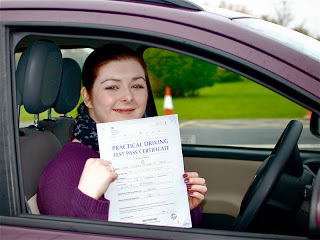Learning to Drive
Zebra crossing
The most familiar type of pedestrian crossing is probably the zebra crossing. It is easily identifiable from the black and white stripes on the road and vertical poles topped by flashing amber beacons. Zig-zag lines mark the approach to the crossing, where it is illegal to park or overtake the leading motor vehicle.
Vehicles should stop to pedestrians waiting to cross and MUST stop for pedestrians who are on the crossing.
Drivers or riders of vehicles on approach to the crossing should be aware of following traffic and should slow down if in any doubt about whether or not the crossing is in use e.g. if you cannot see both sides clearly.
Although rarely used, an arm signal can be given to pedestrians waiting to cross to inform them that you are slowing down.
Secure the vehicle after stopping by applying the handbrake and selecting neutral gear. Do not move off until:
- The crossing is completely clear
- You have checked both footpaths for pedestrians who may be rushing onto the crossing area
- You have checked you mirrors for overtaking vehicles
If the zebra crossing is split into two with a central island, the crossing should be treated as two independent crossings.
Pelican crossing
 |
| Figure 1 - Pelican Crossing Signal Control Box |
The pelican crossing is the oldest design of pedestrian light controlled crossings in use today. These are gradually being phased out in favour of newer designs that we will examine later in this handout.
To operate the crossing a pedestrian presses a button on the signal box at which time the word WAIT is illuminated as shown in Figure 1. Shortly thereafter the far side signal (high up on the opposite side of the crossing) will change from an illuminated red silhouette to green, as shown in Figure 2.
This indicates to them that they can proceed to cross with caution.
From the driver’s point of view a pelican crossing can be identified by zig-zag lines on approach, by traffic signals and by metal studs on the road surface marking the crossing area.
 |
| Figure 2 - Pelican Crossing Far Side Signals |
On approach to a pelican crossing use the mirrors to plan for safe braking and look for pedestrian activity so you can anticipate the lights changing to amber and red.
Secure the vehicle after stopping. Don’t move off until:
- The crossing is completely clear
- You have checked both footpaths for pedestrians who may be rushing onto the crossing area
- A flashing amber or green traffic signal is showing
- You have checked you mirrors for overtaking vehicles
A split pelican crossing (i.e. with a central island) that runs straight across the road is to be be treated as a single crossing whereas if the two parts of the crossing are staggered, each part should be regarded as being independent.
Puffin crossing
 |
| Figure 3 - Puffin Crossing Signal Control Box |
Puffin stands for Pedestrian User Friendly Intelligent and is a modern upgrade to the pelican crossing.
This type of crossing is equipped with infrared sensors that monitor each side of the crossing as well as the crossing area itself.
The sensors are monitored by the crossing electronics so when the following happens the traffic signals are cancelled:
- A pedestrian walks away from the crossing instead of crossing the road
- A pedestrian sees a gap in the traffic and crosses before the pedestrian signals activate
In addition after the signals activate and pedestrians are crossing the sensors will hold the traffic on red until they have crossed the road. This is especially useful if the pedestrians need extra time to cross.
This type of crossing can be distinguished from other types by the control box as shown in Figure 3. Also note that this type of crossing does not have a flashing amber phase on its traffic light sequence.
Toucan crossing
 |
| Figure 4 - Toucan Crossing Signal Control Box |
Toucan crossings are usually equipped with the same sensors as a Puffin crossing. The important difference is that this type of crossing is designed to allow cyclists to ride across it. On other types of crossing cyclists are required by law to dismount before crossing.
Figure 4 shows the pedestrian control box for a Toucan crossing. Pedestrian signals are usually, although not always, on the far side.
Remember TWO CAN - two types of road user, can use this type of crossing.
Equestrian [Pegasus] crossing
 |
| Figure 5 - Equestrian Crossing Control Box |
Crossings are sometimes provided for use by horse riders, often where bridleways cross busy roads.
Additional signal boxes are placed in a high position
where riders can easily use them.
Figure 5 shows the controls for this type of crossing.
Signals use the horse symbol. The crossing is similar in use to a Toucan crossing. Horses can be ridden across the crossing - it is not a requirement for riders to dismount.
Driving Schools in Chester and Ellesmere Port
Visit our main website if you want to know more about
driving lessons Chester.
© Steve Paddy - All Right Reserved




















